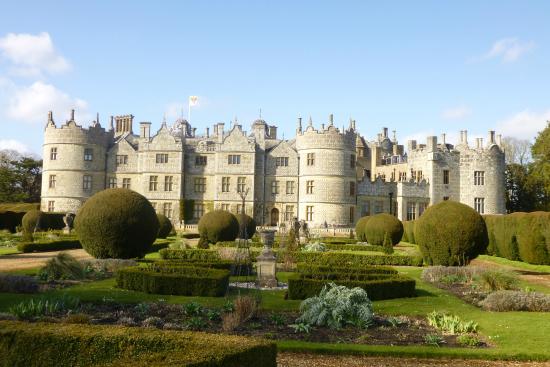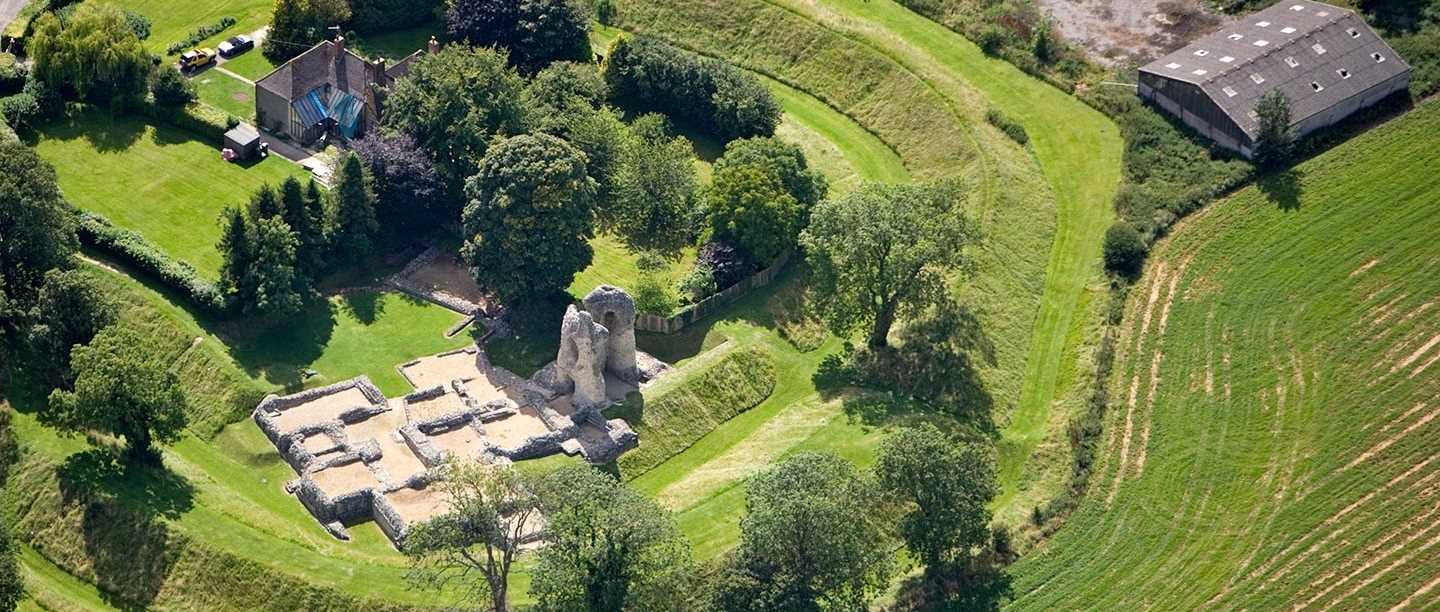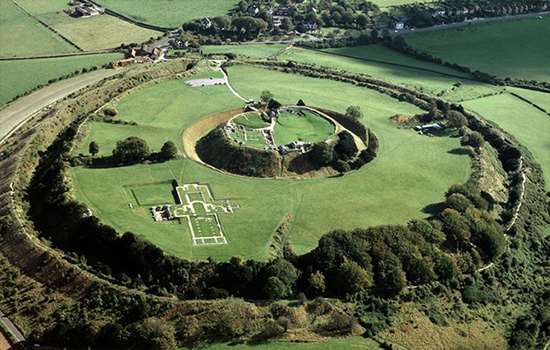Sadly, there are only a few real castles left in Wiltshire. Poverty, war and neglect sealed the fate of every Anglo-Saxon residence, while the Norman castles and country estates were squabbled over by the aristocracy, taken back by the crown, and eventually crumbled to ruin from lack of care. The Dissolution of Monasteries Act ordered by Henry VIII saw the end of all abbeys and priories in the county.
From the 16th century estates, manors and churches were usually built on the ruins of older buildings leaving archaeology difficult if not impossible.
Devizes Castle
The origins of Devizes Castle began in 1080 when a medieval fortress was built by Osmund, Bishop of Salisbury. The baileyed castle is presumed to have been erected over the top of an Iron age fortress. Devizes Castle is famous for its part in King Stephens war against Empress Matilda. King Stephen besieged the castle in 1139, as did Oliver Cromwell in 1645, and King John imprisoned his queen here. The fortification must have been secure because Henry II and Henry III both used the castle as a prison.
Today, little of the historical castle remains. The original mound, an outline of the moat and traces of the foundations of the great hall are all that can be seen. Still, the ‘Neo-Norman’ design of the 19th-century resurrection is very aesthetically pleasing! The building is now divided into flats in private ownership and is not open to the public.

Longford Castle
Longford Castle is located on the banks of the River Avon south of Salisbury. It is the seat of the Earl of Radnor, and an example of the Elizabethan prodigy house. The original Manor house was acquired by Thomas Gorges in 1573 and has since changed its shape from a triangle to the hexagon you see today. Every generation has made alterations but it was Jacob, 4th Earl of Radnor (1815-1889), who oversaw the last significant changes to the castle architecture.
Today, the castle is a Grade I listed building and is currently the seat of William Pleydell-Bouverie, 9th Earl of Radnor. You can visit the castle which is open to the public for pre-booked tours on 28 days of each year.
Those who have seen the film The Princess Diaries may recognise Longford as the castle of Genovia, seen at the end of the movie.

Ludgershall Castle
Ludgershall Castle is a ruined 12th-century fortified royal residence at Ludgershall in Wiltshire. Three large walls still remain of the castle, which was turned into a hunting lodge by Henry III but fell into disuse by the 15th century. Extensive earthworks remain, although a private house stands on part of the site.
The property is now under the care of English Heritage.
Old Sarum
Cross Old Sarum‘s wooden bridge and step into the heart of a once bustling medieval castle. Built around 1070 by William the Conqueror, it was here in 1086, that William gathered all the powerful men of England for a ceremony to assert his royal authority.
Building the castle in the middle of the old earthworks transformed the site. It created an inner set of fortifications which became home to a complex of towers, halls and apartments, and a huge bailey.
Stand in the footprint of Salisbury’s original cathedral in the outer bailey of Old Sarum.
The first cathedral was a modest building damaged by a violent thunderstorm just five days after its consecration in 1092. It was later massively extended by Bishop Roger.
In 1220 foundations were laid for a new cathedral in Salisbury (New Sarum) and Bishop Roger’s cathedral was demolished. Many of its stones were re-used in the construction of the new building. The outline of both the original and extended cathedrals can be seen today.
Old Wardour
Set in the peaceful Wiltshire countryside beside a lake, Old Wardour Castle, near Tisbury was once one of the most daring and innovative homes in Britain. It was built in the 14th century as a lightly fortified luxury residence for comfortable living and lavish entertainment. The original castle was partially destroyed during the English Civil War.
Today, it is managed by English Heritage who have designated it as a grade I listed building and is open to the public.
If you saw Robin Hood: Prince of Thieves with Kevin Costner you’ll recognise this as his family home that was destroyed by the Sheriff of Nottingham





We live in Castle Lane, Wilton, Salisbury, Wiltshire and next to ‘Castle Meadows’ in Wilton. Currently, there is no ‘castle’ in Wilton, but I have a reference that the name refers to “a castle built there by King Stephen as part of the fortifications of the town during ‘The Anarchy’ otherwise known as the English Civil War 1135-1153.”
Does anyone know of published information concerning Wilton Castle, its construction, use and ultimate demise, please?